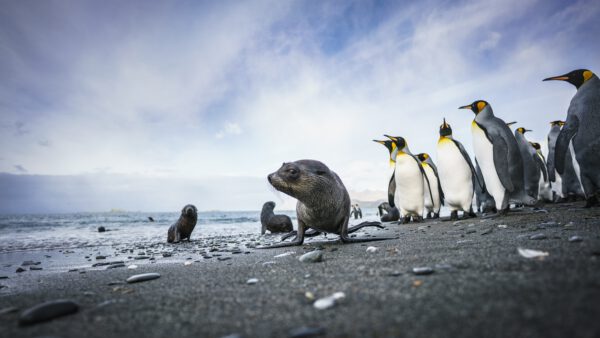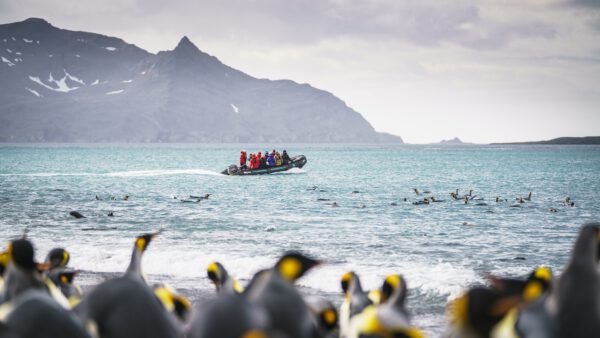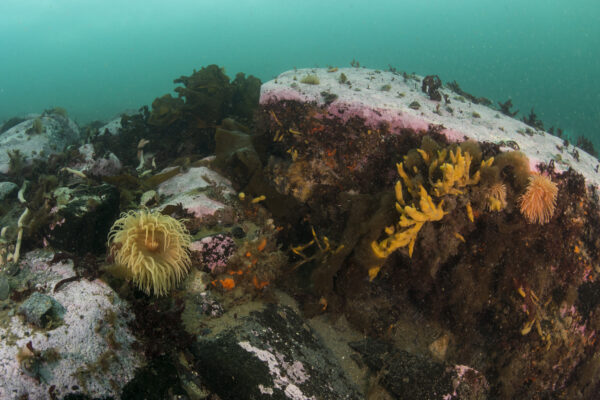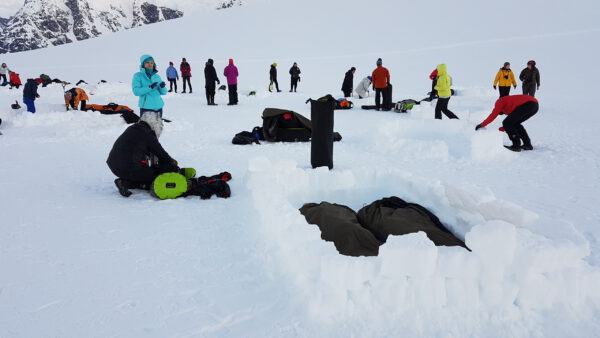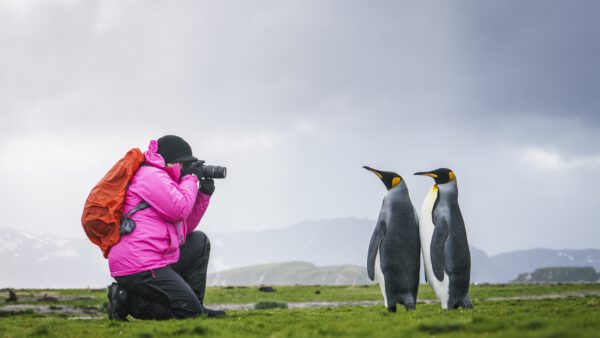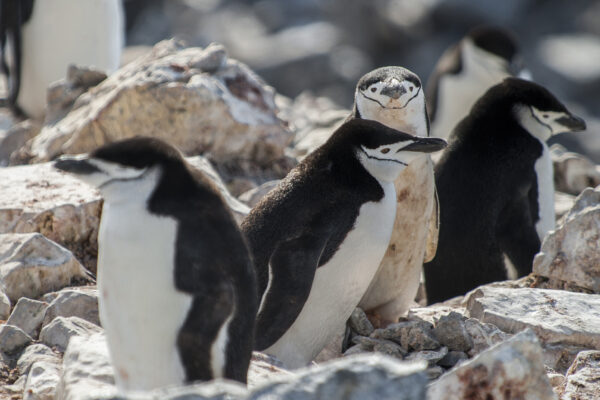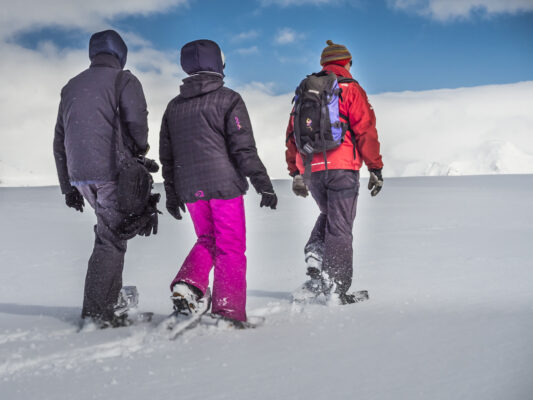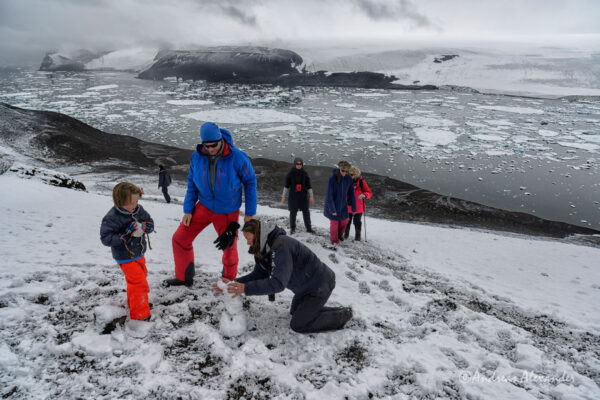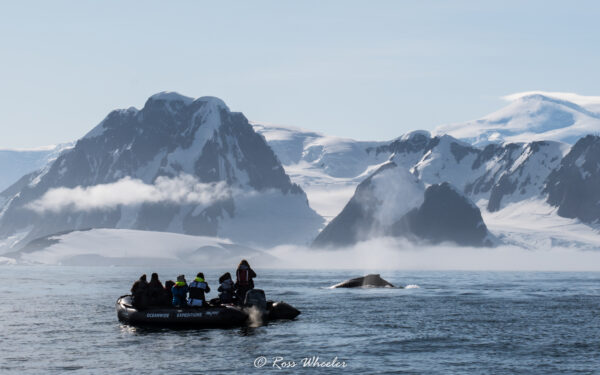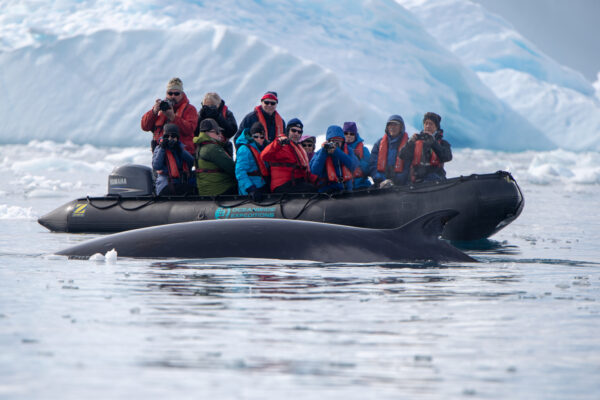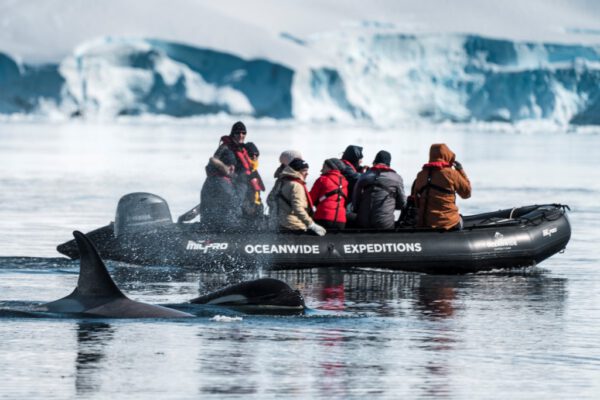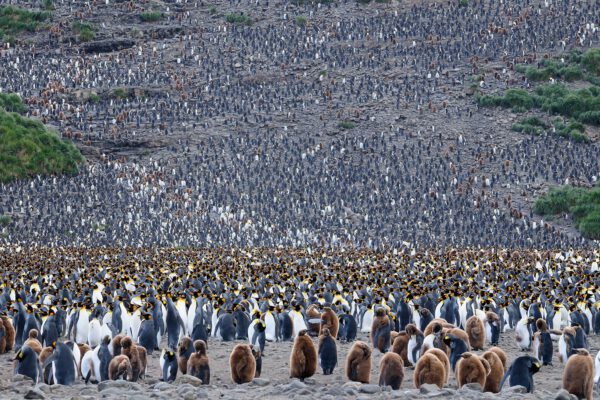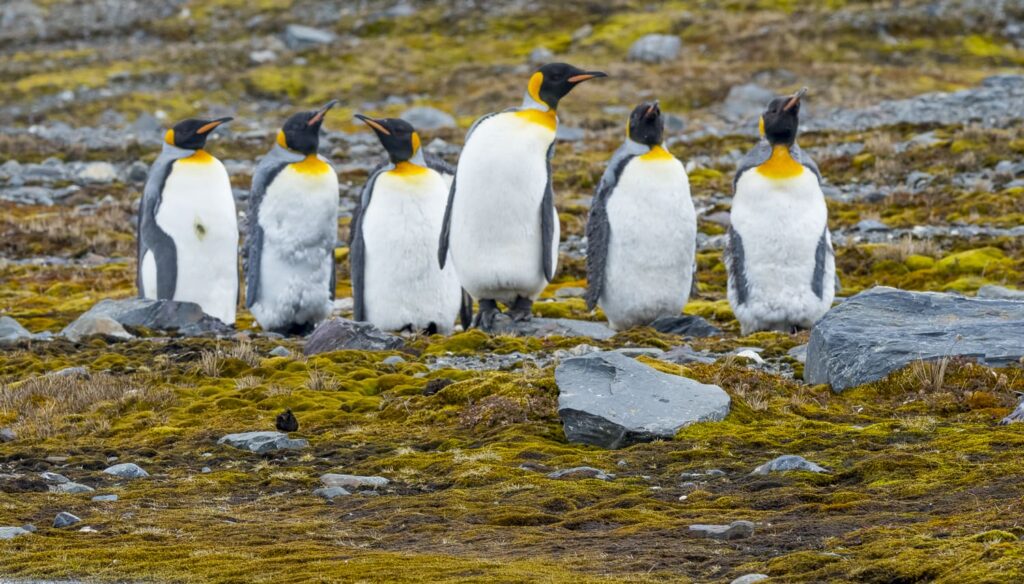When most people think of penguins, they think of those cute little tuxedo birds that live in the coldest places on Earth. However, there is so much more to learn about these fascinating creatures! Interested in seeing penguins? Consider a cruise to Antarctica!
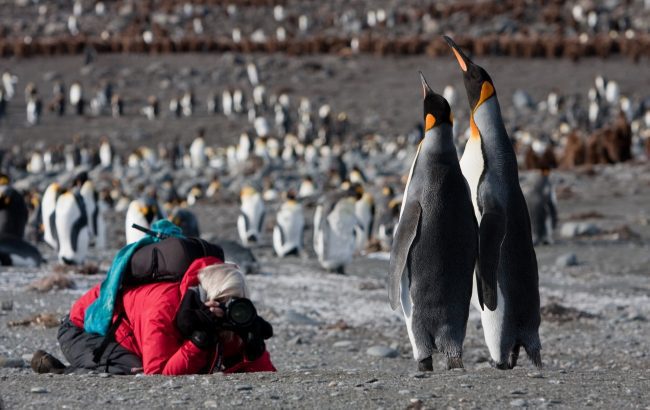
Penguins Are Birds That Cannot Fly
Penguins are members of the family Spheniscidae, and are mainly found in the Southern Hemisphere. They have adapted to an aquatic lifestyle and therefore cannot fly. Some species can reach speeds of up to 15 mph by ‘tobogganing’ on their bellies across the ice or water whilst others can dive to a depth of up to 550 meters. Penguins have extremely dense and waterproof plumage that traps air against their body and in turn, insulates them from the cold. They also have webbed feet and flippers for swimming, with some species able to stay underwater for around 18 minutes at a time! Penguins feed mainly on fish, squid, krill, and other crustaceans.
Penguins use their wings for balance whilst swimming, rather than for flying. They are very social creatures and live in large colonies called rookeries which can be anything from a few pairs to hundreds of thousands of birds! Penguins have also been known to ‘toboggan’ down snowy slopes for fun, and even catch a ride on the back of whales. Penguins are truly remarkable birds in their own right and are an incredible sight to behold!
They Live In The Southern Hemisphere, Near The Antarctic
Penguins are mainly found in the Southern Hemisphere, and some species breed as far south as Antarctica. The largest concentrations of penguins exist along the coasts of Argentina, Chile, South Africa, Australia and New Zealand. Penguins prefer cold climates and have to migrate when the water gets too warm with some migrating over 1000 miles per year. Penguins are very hardy creatures and so they are able to withstand the harsh conditions found in Antarctica, such as freezing temperatures and snow storms. They can even survive being frozen in ice!
Penguins play a vital role in the Antarctic ecosystem by keeping their population of small fish and krill in check. Penguins also provide a food source for larger predators such as seals and killer whales. Unfortunately, some species of penguins are endangered due to climate change, overfishing, and other human activities. It is important that we work hard to protect these incredible creatures and the environment they inhabit.
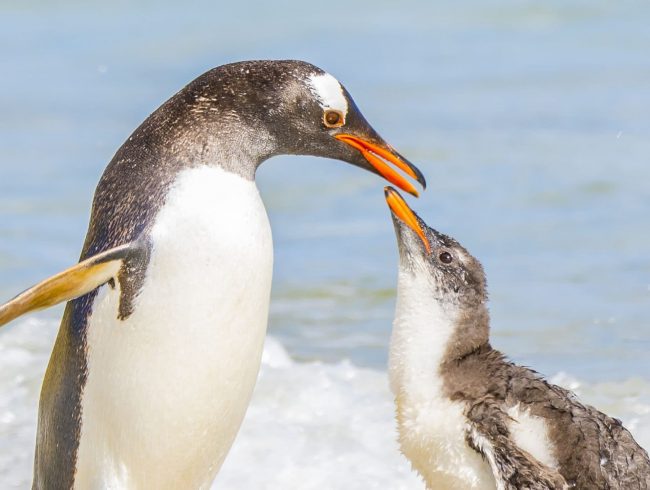
Penguins Eat Fish, Krill, And Squid
Penguins feed mainly on small fish such as anchovies, sardines, and krill, as well as squid and other crustaceans. Depending on the species, penguins may dive up to 550 meters deep in search of food. They have special adaptations that allow them to survive the cold water temperatures and find their prey using their excellent eyesight and hearing.
Penguins also rely on their powerful flippers to swim and maneuver through the water. Penguins are able to swim up to 17 miles per hour and can dive depths of hundreds of feet when hunting for food. Their flippers are also used as a rudder, helping them to quickly change directions in pursuit of prey.
Their strong beaks help them catch and eat food. They also have a specialized digestive system that helps them to extract the most nutrients from their meals.
Gentoo Penguins Are The Fastest-Swimming Penguin Species
Gentoo penguins are the fastest swimming penguin species, reaching speeds of up to 36 kph (22mph). This is thanks to their long and powerful flippers that act like oars in the water. They also have webbed feet which help them propel through the water at even greater speed. Gentoo penguins breed along the coasts of Antarctica, the Falkland Islands, and South Georgia.
Emperor Penguins Are The Largest Penguin Species
Emperor penguins are the largest and most well-known penguin species. They can reach up to 115cm (45in) in height, making them almost twice as tall as other species! Emperor penguins inhabit the Antarctic ice shelf, where they breed during the long winter months.
Emperors feed mainly on fish, squid and krill like other penguin species. They have remarkable adaptations that allow them to survive in these harsh conditions, including a thick layer of blubber and an insulating coat of feathers. Emperor penguins also have unique vocalizations that can be heard over great distances and are used to communicate with other members of the colony.
Emperor penguins have also adapted to breeding in the extreme cold. They will huddle together during the winter months, forming tight circles to conserve heat and protect their chicks from predators. They are also able to fast for long periods of time, which allows them to survive when food is scarce.
Unfortunately, Emperor penguins face many threats, not just from predators. As the Antarctic ice shelf melts, their breeding grounds are becoming increasingly difficult to access. It is therefore vital that we protect these remarkable creatures by reducing our impact on their habitats.
Emperor penguins are an amazing species that have adapted perfectly to life in the Antarctic. They are an iconic symbol of the Southern Hemisphere and must be protected for future generations to enjoy. You can see Emperor penguins on specific Antarctica cruises! Learn more here.
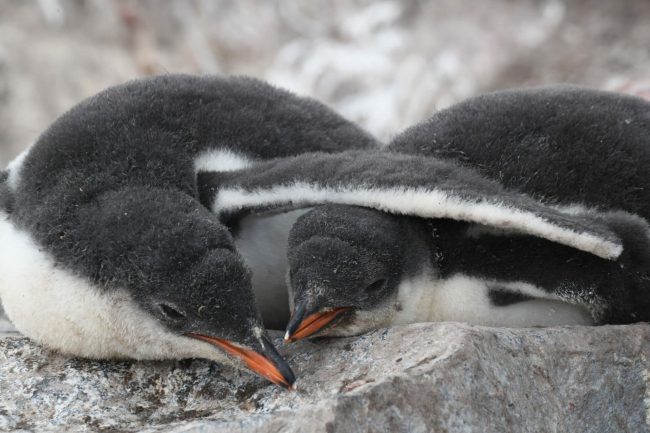
Penguin Feathers Are Waterproof And Keep Them Warm In Cold Water
Penguins have a unique adaptation that allows them to survive in cold water – their feathers. Penguins are covered in thousands of small, tightly packed feathers that overlap like shingles on a roof. These feathers form an insulating layer that traps air close to the penguin’s body and keeps it warm.
Penguin feathers are also designed to be waterproof. Each feather has a waxy coating that prevents water from penetrating the layer of insulation. This allows penguins to swim without becoming too wet or cold, even in icy waters.
Penguins must preen their feathers regularly in order to retain their insulating properties. They use special oils from their preen glands to waterproof and condition the feathers. This helps to maintain a good seal between the feathers so that no water can get through.
Penguin feathers are also designed for speed in the water. Each feather is shaped like an airfoil, which reduces drag and allows them to move quickly through the water. Penguins can reach speeds of up to 20mph (32km/h) when they are hunting for food.
There Are Same-Sex Penguin Couples
Penguins are known for their monogamous relationships, but interestingly there are some same-sex couples among them. These same-sex pairs are usually male but have been observed in both female and mixed-gender colonies as well.
Same-sex penguin couples form strong bonds and often exhibit behaviors that are similar to heterosexual breeding pairs. They build nests together, take care of eggs and chicks, and even share parenting duties.
Biologists believe these couplings are likely due to a shortage of potential mates of the opposite gender, or they may simply prefer the same gender. Whatever the reason may be, these same-sex couples are an important part of the penguin community and demonstrate the incredible diversity found in the animal kingdom.
Overall, Emperor penguins are fascinating creatures that display a variety of behaviors and adaptations. They have successfully adapted to life in both land and water, with their unique design allowing them to survive in extreme environments. From their remarkable vocalizations to their same-sex couples, these incredible creatures will continue to amaze us for many years to come.
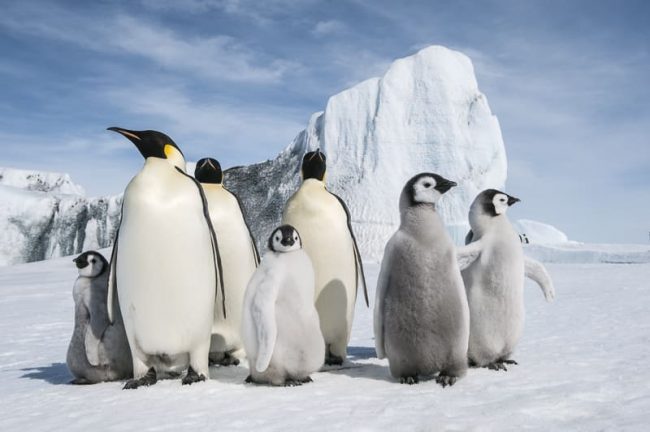
Male Emperor Penguins Incubate Eggs While Females Hunt
Male emperor penguins have a unique behavior that allows them to help their partners and their offspring in the extreme cold of Antarctica – they incubate their eggs while the female goes off to hunt. During breeding season, male emperor penguins will form a tight huddle around their egg for weeks at a time. The males will take turns standing on the egg and rotate positions every few hours. This ensures that the egg is kept warm and safe from predators.
The female emperor penguins will go off to hunt during this time and can be gone for days at a time, sometimes even weeks. When she returns, the male will relinquish his position and feed her before she takes over incubating duties. This unique behavior allows both the male and female emperor penguins to survive in the frigid Antarctic climate.
The Deepest Dive Ever Made By A Penguin Was More Than 6,000 Feet Underwater
The deepest dive ever made by a penguin was more than 6,000 feet underwater. This impressive feat was recorded in 2013 by an Emperor Penguin who dove to this incredible depth in search of food.
This remarkable dive demonstrates the strength and agility of these amazing birds. Penguins use their powerful wings to propel themselves through the water when diving and have been recorded swimming up to 17 miles per hour. They also have strong eyesight that allows them to spot potential prey from a distance.
Penguins must be able to dive deep in order to access food sources, as some of their favorite foods are located too far below the surface for them to reach by simply swimming. Penguins have been observed eating fish, crabs, squid and more.
The incredible diving abilities of emperor penguins make them truly remarkable creatures. With proper protection, we can ensure that these amazing birds will continue to thrive in the wild for many years to come.
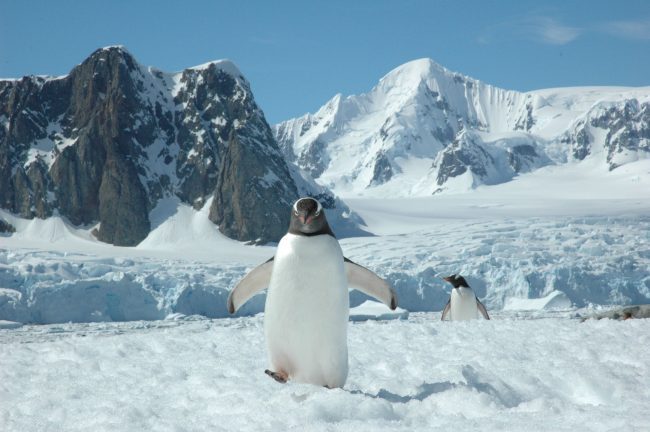
They Also Stay Warm By Keeping Cold
Emperor penguins stay warm in the extreme cold of Antarctica by keeping themselves as cold as possible. By doing this, they are able to conserve energy and reduce their metabolic rate. This helps them to survive even in frigid temperatures.
The emperor penguin has a number of adaptations that can help it stay warm while swimming or standing still. For example, their waterproof feathers contain a layer of air that helps to insulate them and trap body heat. Additionally, they have a thick layer of blubber beneath the skin and can even huddle together in large groups to share body heat.
Their eyes are also adapted to the conditions of Antarctica by having extra blood vessels to help keep them warm. When the emperor penguin dives underwater, its eyes are protected by a thin layer of clear oil that helps it to see clearly while keeping them from freezing.
Penguins In Warmer Climates Have Clever Ways Of Cooling Down
Penguins living in warmer climates have also adapted to their environment and have developed clever ways of cooling down. To help regulate their body temperature, some species use a process called ‘gular fluttering’. This involves rapidly vibrating their throat muscles which helps to evaporate water from the bird’s mouth and nasal passages. This process cools and moistens the air they breathe, helping them beat the heat.
Other penguin species may also use water to help keep cool. They will stand in shallow pools of water or lie down on wet rocks during warm days, which helps to absorb some of their excess body heat. Additionally, some penguins have been observed using the shade of boulders or other objects to reduce exposure to direct sunlight and escape the heat.
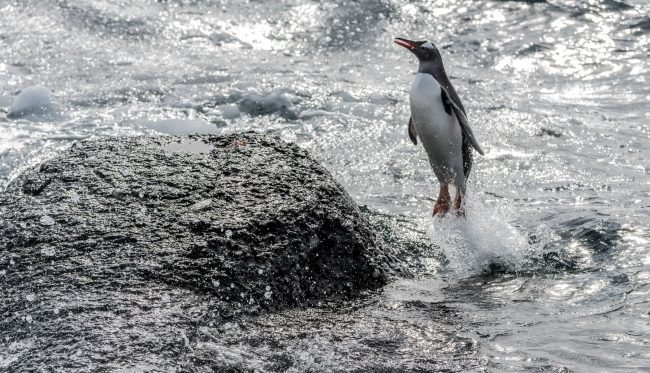
Penguins Can’t Fly, But They CAN Become Airborne: Some Can Leap As High As Nine Feet!
Although penguins cannot fly, they do have the ability to become airborne. Penguins use their wings to ‘fly’ underwater while swimming and can also leap out of the water into the air.
Penguins have been observed leaping as high as nine feet out of the water in order to catch prey or escape predators. As they jump into the air, their wings create enough lift and thrust to propel them upwards.
The penguin’s wings are also adapted for swimming underwater. They have webbed feet that act like paddles, helping the penguins to quickly move through the water. Additionally, their wings can be used as a rudder to help them quickly change directions while swimming.
Penguins are incredible creatures that have adapted to their environment in order to survive. Through their remarkable diving and leaping ability, they can easily find food and evade predators in the icy waters of Antarctica. Their ingenuity and resilience is truly awe-inspiring. Interested in seeing penguins in person? Book an Antarctic cruise!
Five Penguin Species Are Classified As Endangered
Unfortunately, five species of penguins are currently listed as endangered. These include the African Penguin, the Galapagos Penguin, the Yellow-Eyed Penguin, the Northern Rockhopper Penguin and the Southern Rockhopper Penguin.
The main threats that these species face are loss of habitat due to human activities such as fishing, pollution and climate change. As above-water temperatures rise, their habitats become increasingly inhospitable for these species to thrive in.
In an effort to conserve these species, many organizations are taking action to protect the remaining populations. These efforts include setting up protected areas, monitoring fishing activities and introducing rehabilitation programs that provide medical care and food sources for penguin populations.
Less Than 4,000 Of The Rarest Kind Of Penguin Exists Today
The rarest kind of penguin today is the Erect-Crested Penguin, which can be found in the Subantarctic regions of New Zealand and Chile.
Unfortunately, their populations have been declining rapidly over the years due to environmental hazards such as oil spills, fishing activities, and climate change. It is estimated that there are less than 4,000 of these species remaining in the wild today.
In order to conserve these king penguins and help boost their population, a number of conservation efforts have been put into place. These include setting up protected areas for nesting sites, monitoring fishing activities in the waters around them, and educating local communities about the importance of conservation.
By working together, we can ensure that these rare penguins are protected and their population numbers start to increase in the future.
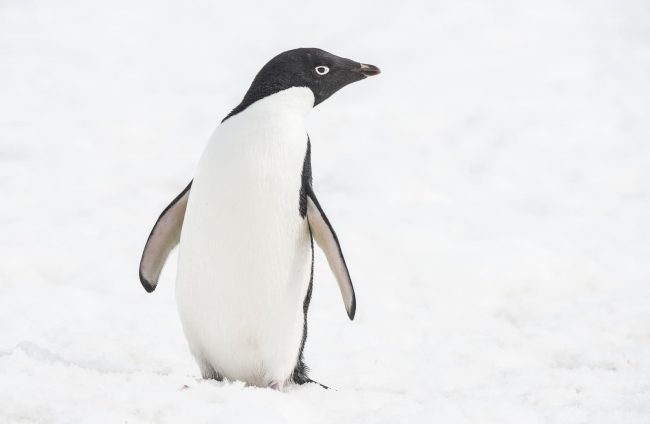
The World’s Oldest Penguin Fossil Dates Back 61 million Years
Penguins have been around for millions of years and the world’s oldest penguin fossil dates back 61 million years. This ancient species, named Waimanu Mannering, was discovered in New Zealand and is believed to be the earliest known ancestor of modern-day penguins. This ancient species is believed to be the earliest known ancestor of modern day Adelie penguins.
These ancient penguins were much larger than their modern-day counterparts, reaching up to 1.5 meters in height. They are thought to have fed mainly on small fish and squid, and used their wings for swimming instead of flying, similar to modern penguin species!
The discovery of this ancient species has provided us with valuable insights into the evolution of penguins and a better understanding of how these creatures have adapted to survive in their environment for such a long period of time. We can use the knowledge we’ve gained from this discovery to help protect and conserve modern-day species of penguins so that they too can thrive for millions of years.
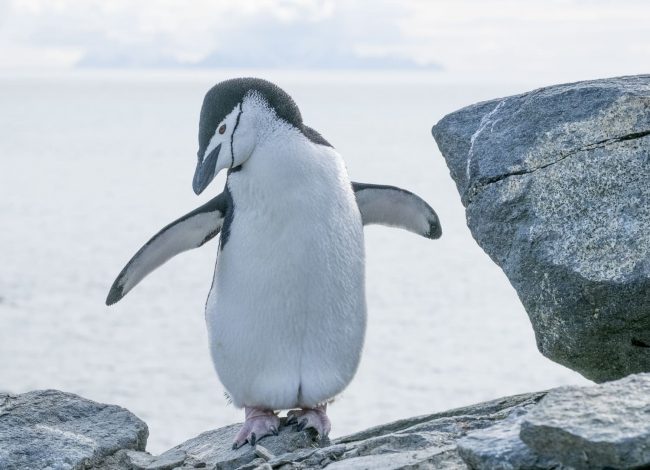
You Can Help The Penguin Conservation Cause!
Penguins are an amazing species that have been around for millions of years. Unfortunately, their populations have been declining rapidly over the years due to environmental hazards such as oil spills, fishing activities, and climate change. Please consider donating to charities focused on penguin conservation!
Conservation Organizations:
Global Penguin Society in the United States and Argentina
The Penguin Foundation in Australia
The West Coast Penguin Trust in New Zealand
The Southern African Foundation For The Conservation Of Coastal Birds in South Africa
There are many more organizations focused on penguin conservancy that would greatly benefit from donations, please help conserve these incredible birds!

